Rickubis Bird Page #4: Grebes
This
page
was born 03/24/2010. Rickubis designed it. (such as it
is.) Last update: 04/13/2025
Images and contents on this page
copyright ©2002-2025 Richard M. Dashnau
Go
back to my home page, Welcome to rickubis.com
Go back to the RICKUBISCAM
page.
----------------------------------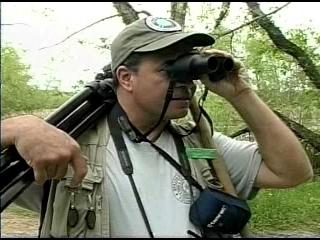
That's me on a trail at Brazos
Bend State Park (BBSP), sometime in 2004.
02/27/2022. I'd gotten
word that there were now two
Least Grebes East on the Spillway Trail, so I went to look for
them. They were near Elm Lake, and I watched them from 10:15am
- 10:40am.
A Least Grebe had been seen at different places along the
trail for weeks. Today, there were two, and they were staying
near some Blue-winged Teal. I only have one picture
showing both of them,
because they wouldn't cooperate and stay together. Those
wonderful eyes!




At BBSP on 01/30/2022. About 50�F Brazos Bend
State Park when I got there. I headed right to Otter
Island, but didn't see any Otters during the few hours I was
there. However, I was treated
to a visit by this Least Grebe (Tachybaptus
dominicus)that swam
by--right in front of me. I'd seen it at different places from
the Observation Tower to the Spillway Bridge over the
last couple
months. Now, it was East of the bridge. That brilliant yellow
eye glinted in the morning sunlight, as the Grebe turned
the dark skin on its backside towards the sun to warm itself.




01/13/2021
(uploaded 4/11/2025) At Fiorenza
Park--Pied-billed Grebes eat their feathers! From: A
Peculiar Feeding Habit of Grebes by: Alexander
Wetmore (1920)
: "In the American
Anhinga (Anhinga anhinga), a fish-eating
bird, there is also a pyloric lobe developed in
the stomach. This chamber is better separated from
the stomach proper than in the grebes and has
an additional peculiarity in the development
of many very slender, corneous filaments that
project as a brush from the surface around the
pyloric opening. These point toward the main
cavity of the stomach and are thought’to act as
strainers that prevent the passage of bones and
scales into the intestine until they have been
properly digested. With this structure in mind
it may be suggested that the feathers
filling the pyloric cavity in grebes have a
similar function." From:
Feather-Eating in Grebes: A 500-Year
Condundrum" by Joseph H. R. Jehl
(2017). --"
All
birds have feathers. Only grebes
eat—and then regurgitate—their own.
All grebes eat their own feathers.
Most are plucked from the flanks,
which are in continual molt; others
are derived
from the breast and belly, or
even from those of other waterbirds
floating on the surface.
The series of images
below are from a video clip I filmed on this
day, showing the Grebe
pulling a feather out, then losing it the water,
then retrieving the feather and swallowing it.
Other images on this page show the amazing size
of the prey that Pied-Billed Grebes can eat.
Using ingested feathers to slow down the passage
of food to allow for full digestion (and also to
strain out items like chitin from invertebrate
prey) seems to be the purpose of swallowing
them.
On 4/13/2025 I've
finally put the various video clips associated
with the images below from 2020 and 2021 into this edited video.
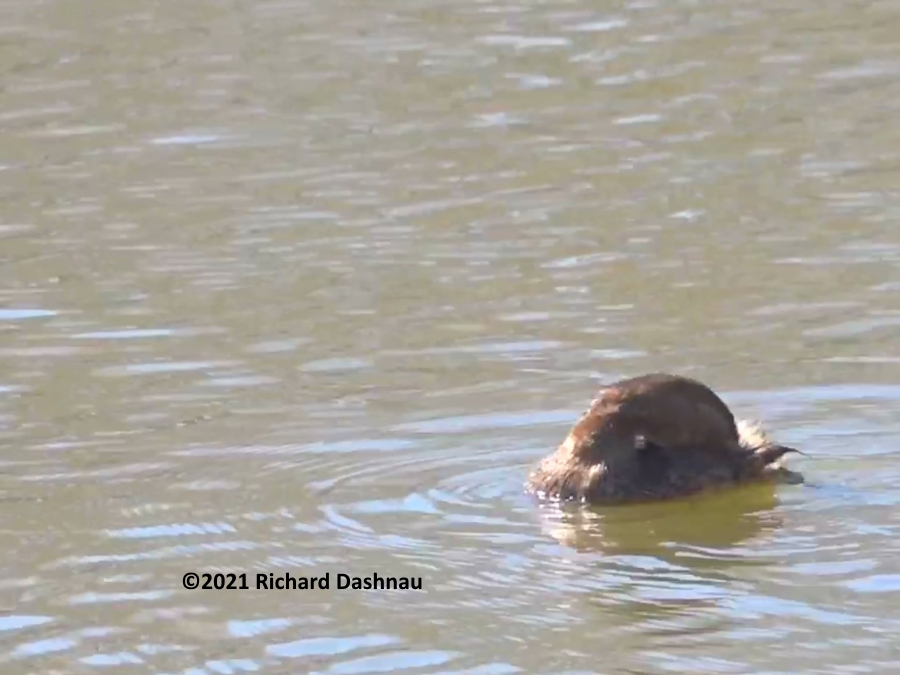
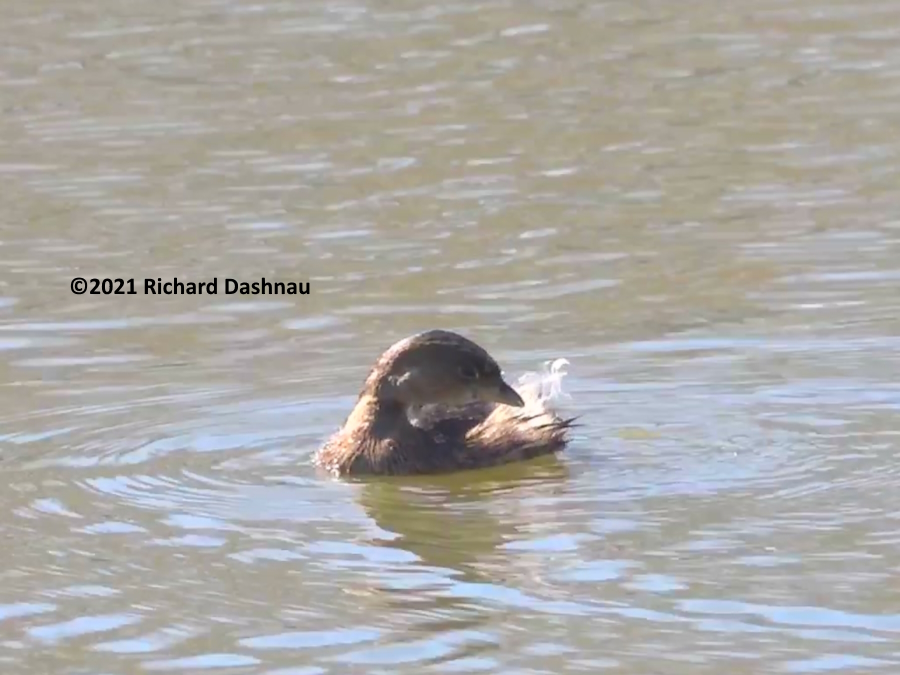
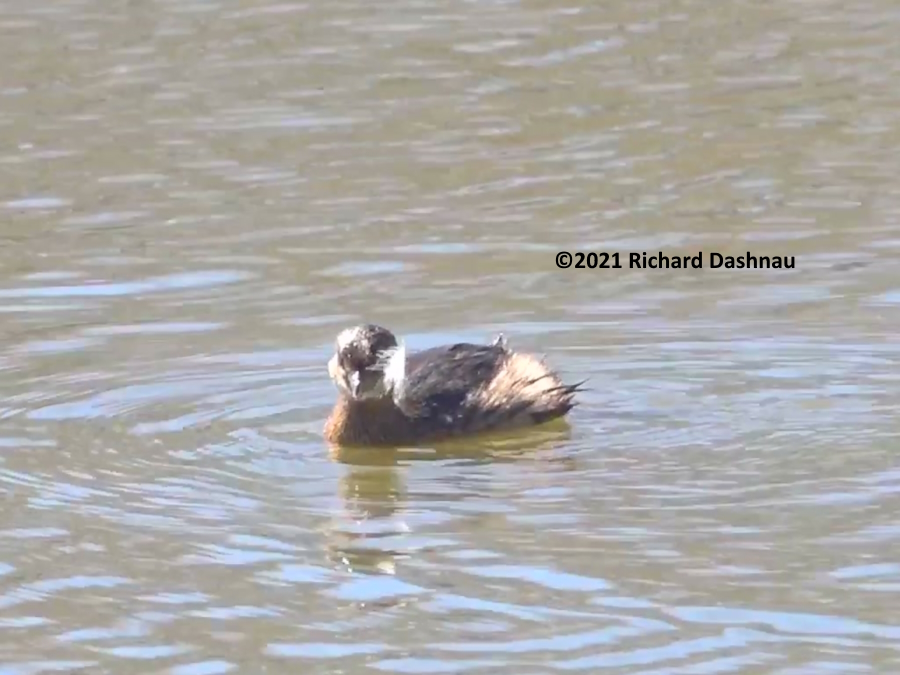
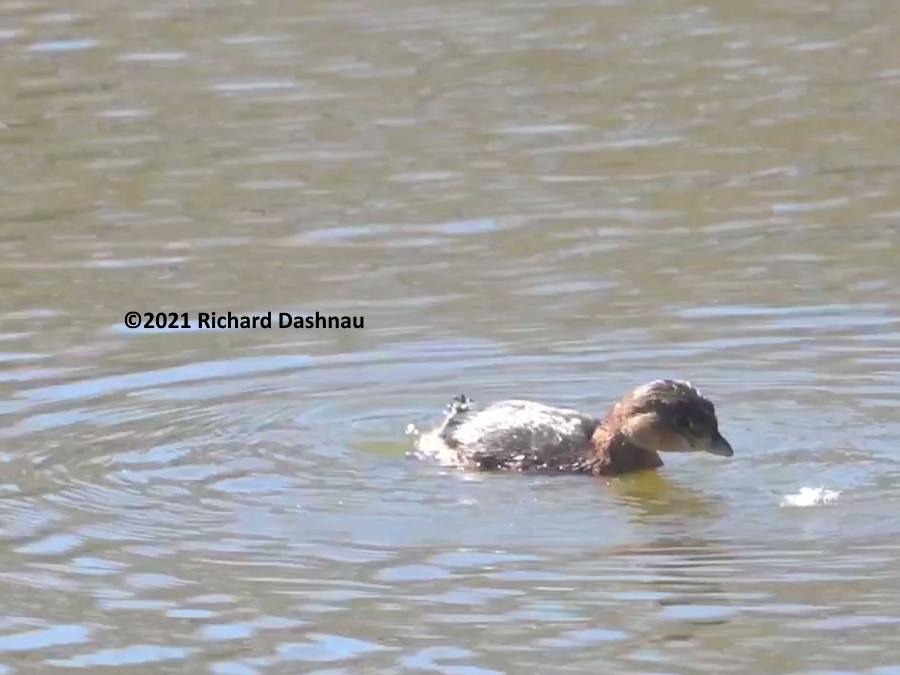
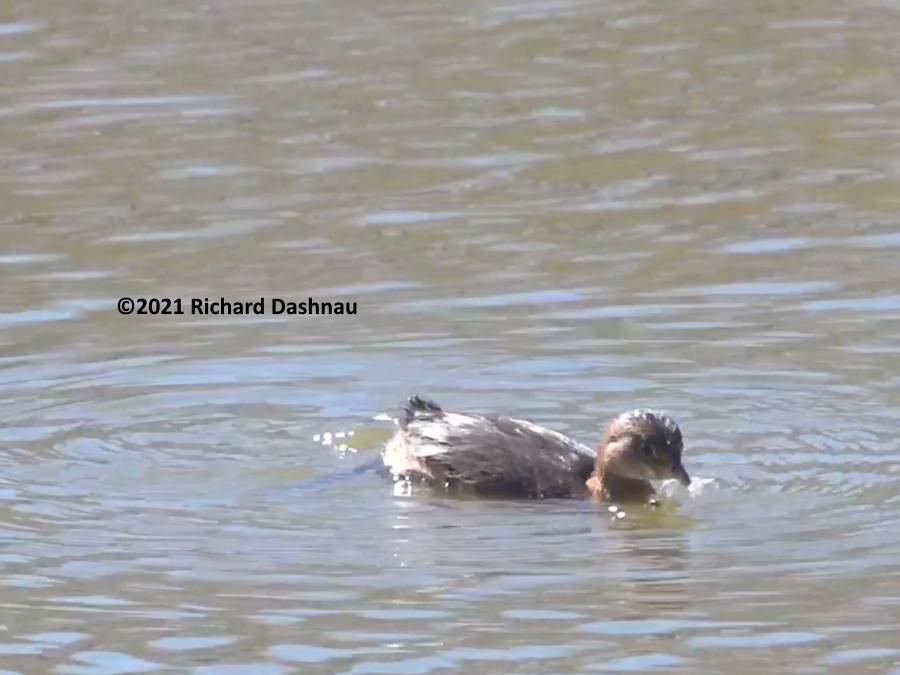

02/15/2020
(uploaded 4/13/2025) At
Fiorenza Park, this Pied-billed Grebe (Podilymbus podiceps)
caught a big crawfish.
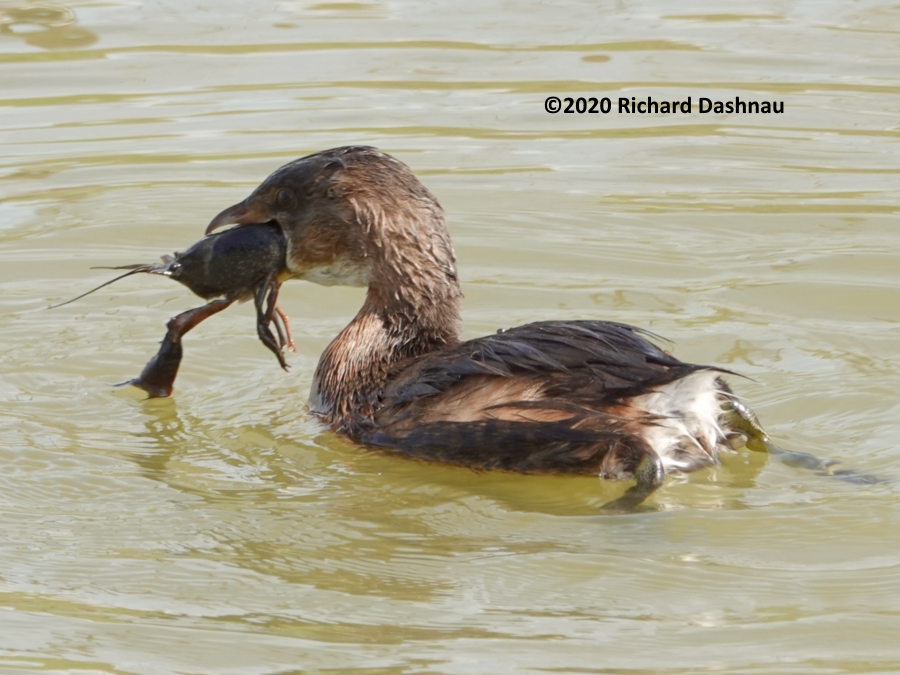
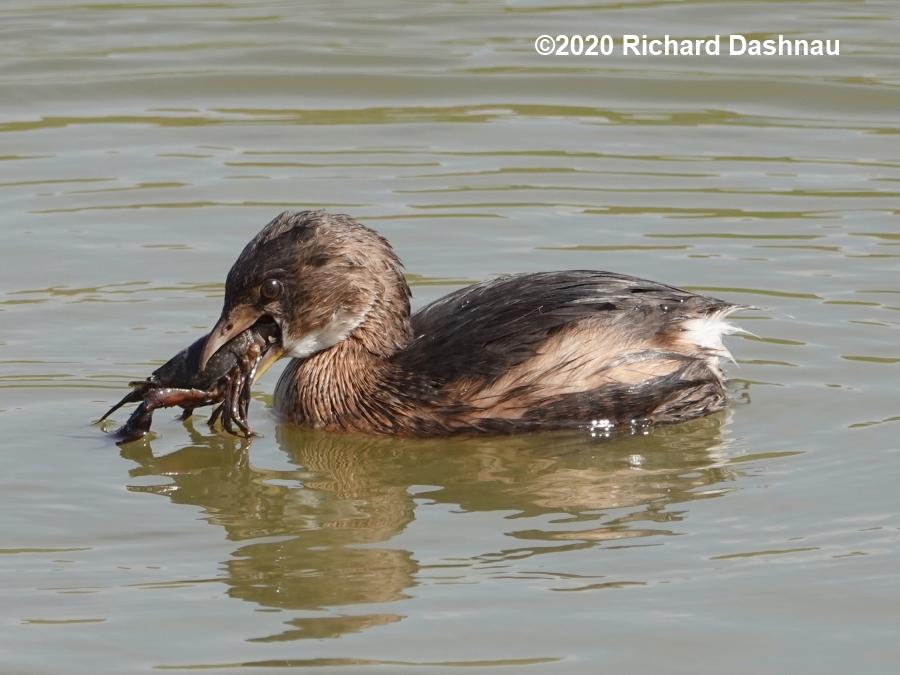
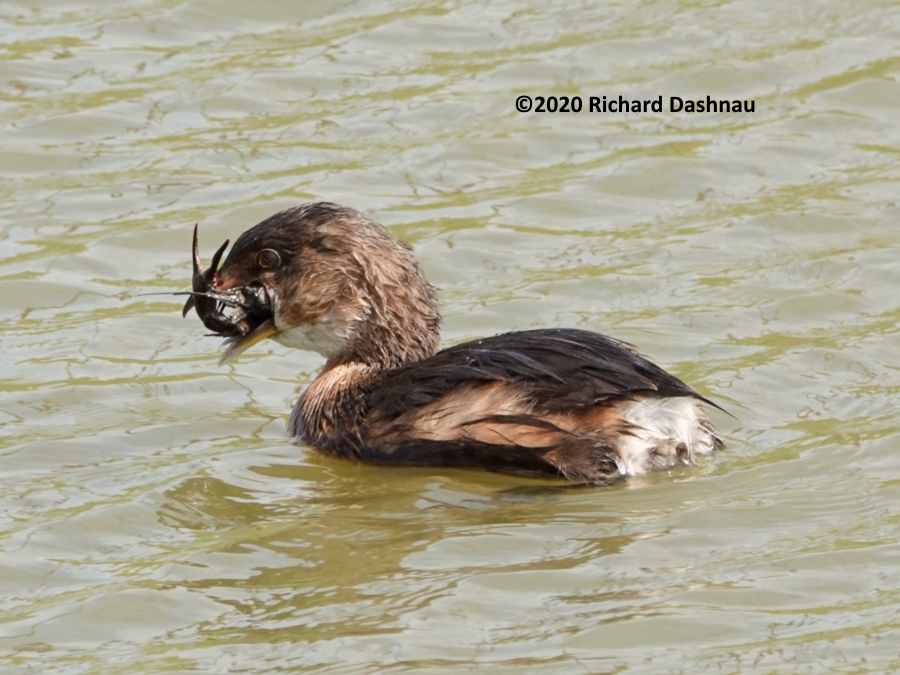
Like almost everyone these days, I've been staying inside.
I have stopped driving around outside
for...recreational purposes.
BBSP is just too far away, AND, entrance protocol to the park has
changed dramatically (even for volunteers). So...I haven't been
going there.
So, this is some video I filmed 02/08/2020
at Archbishop Fiorenza park. I had been watching Pied-Billed
grebes (other videos of them have been posted before).
This time, I watched a grebe scratching its head. Grebes are
well-adapted for swimming. Their legs are set further back on
their body than on other birds. But the
most obvious tool is their amazing feet. Unlike the webbed
toes of ducks, each of a grebe's toes is a separate, large,
paddle. This makes a huge, floppy foot which is great
for swimming. But, it's probably not so great for scratching.
I shot some high-speed video (480 fps) of a grebe scratching
its head. It is being playe back at 60fps...or 8x slower.
The images below are frame grabs from the cropped video...which is
why they aren't too clear. The video works, though. That video is here.



02/01/2020
(uploaded 4/11/2025) At Fiorenza
Park, Pied-billed Grebes were catching and eating fish that were
as large as (or larger) than their head. I'm posting these to
illustrate how much
a single catch will require some interesting digestive
processes.

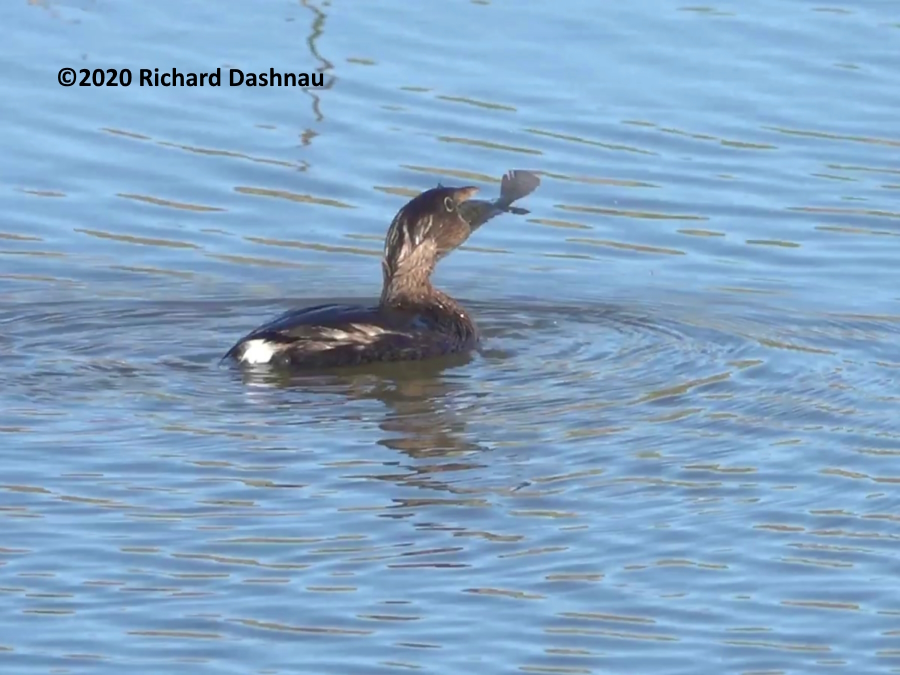
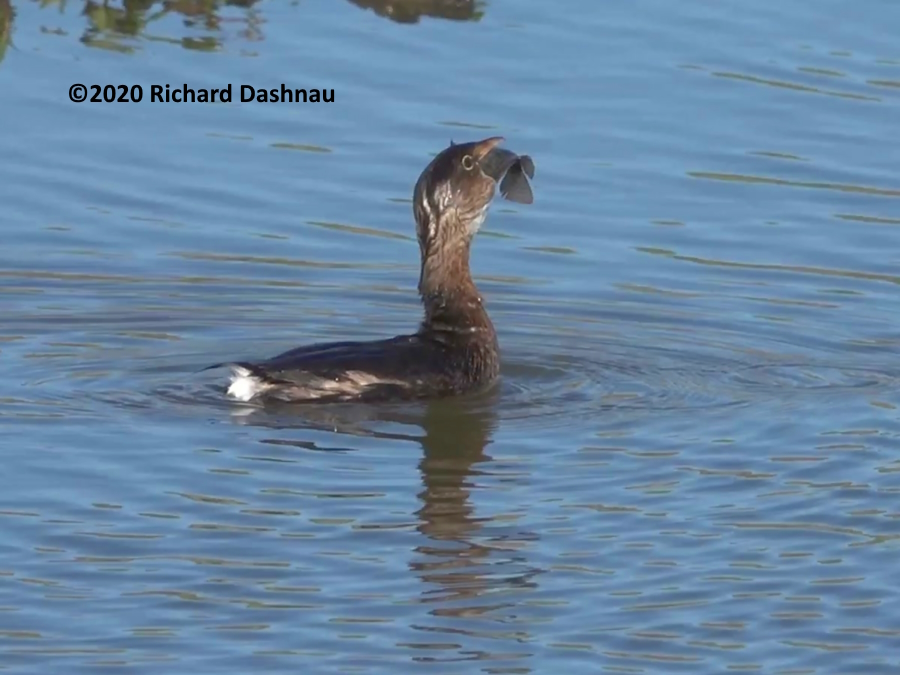
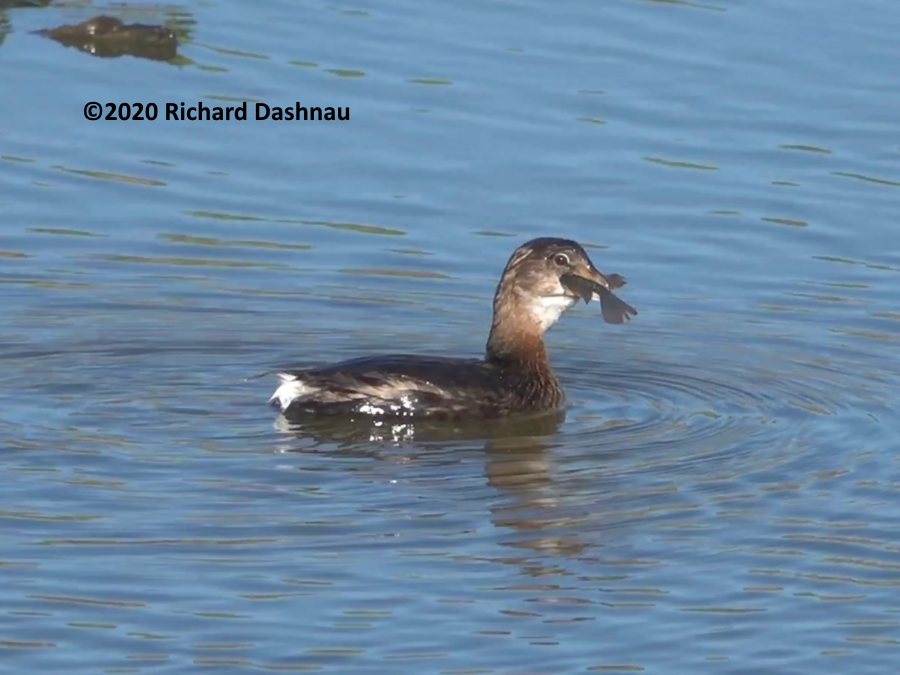
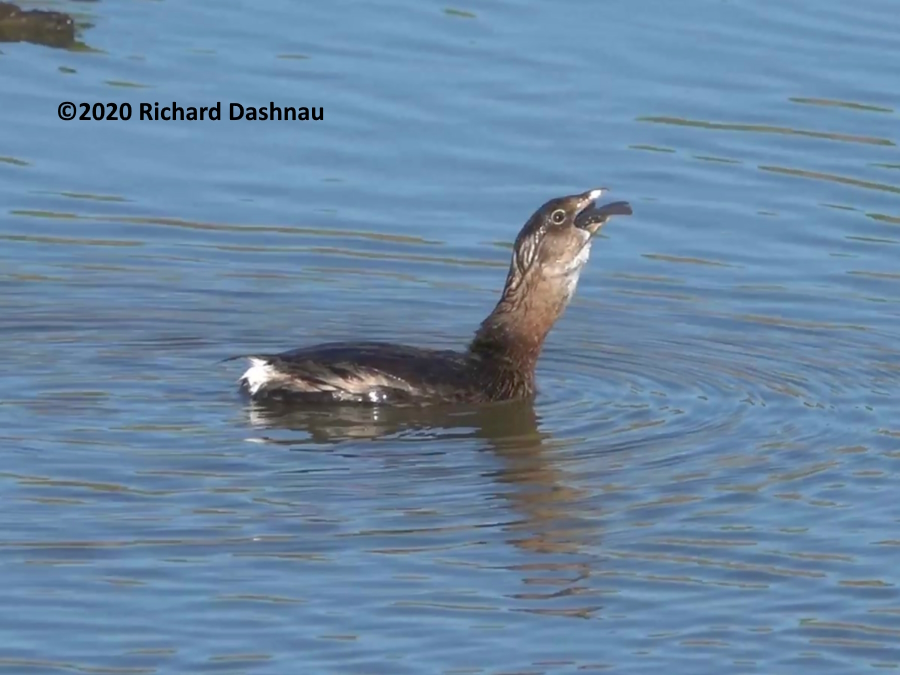
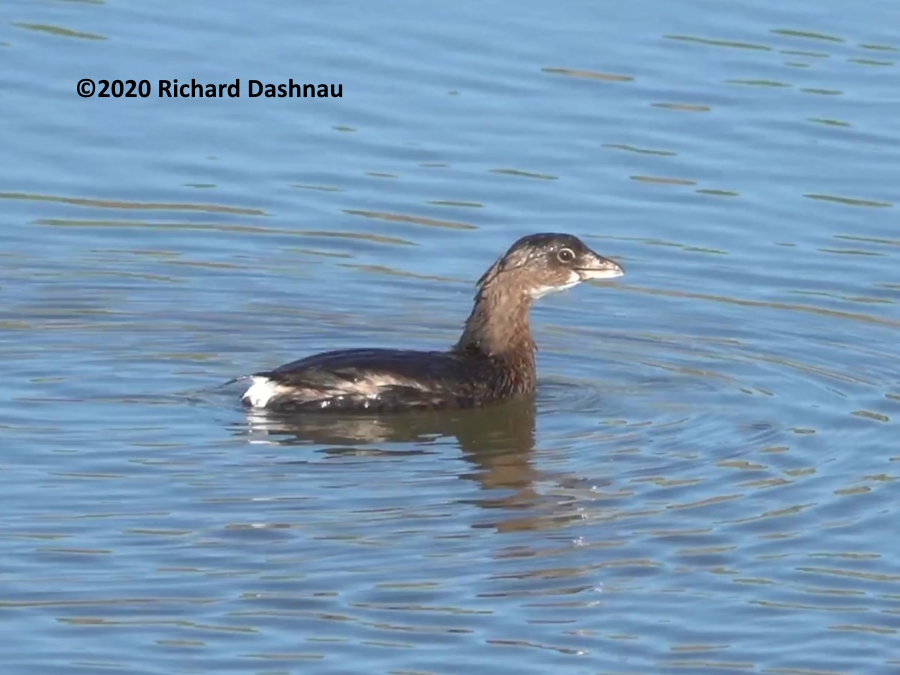
01/04/2020
(uploaded 4/11/2025) At
Fiorenza Park, Pied-billed Grebes (Podilymbus podiceps)
were catching and eating fish that were as large as (or larger)
than their head. I'm posting
these to illustrate how much a single catch will require some
interesting digestive processes.
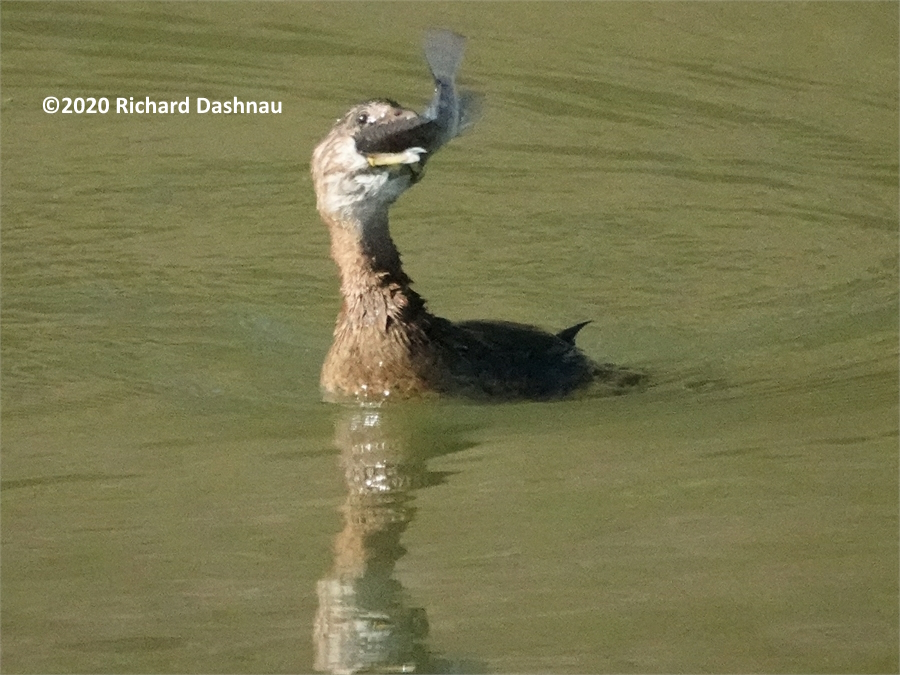
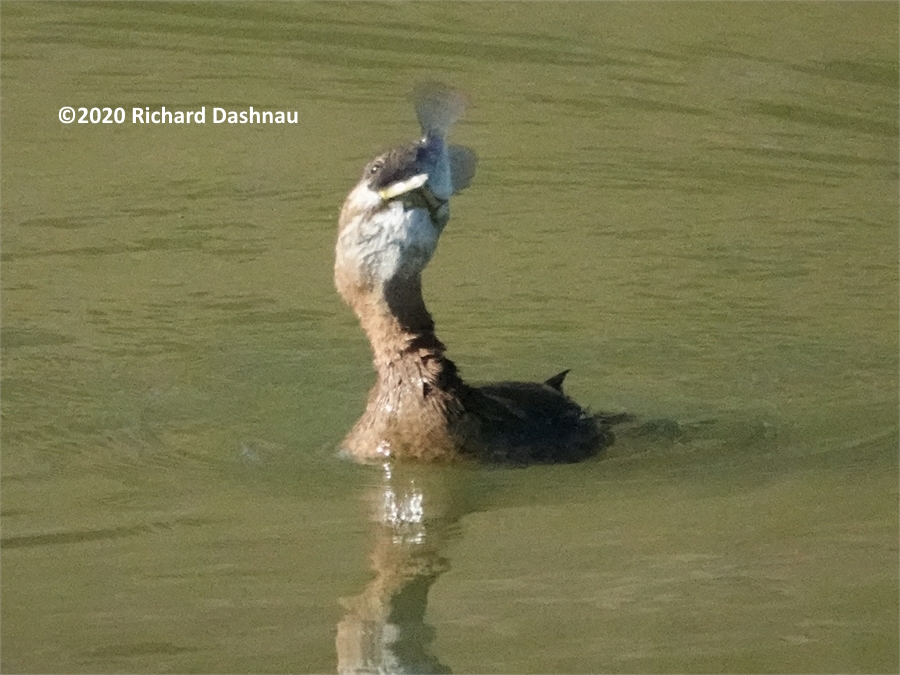
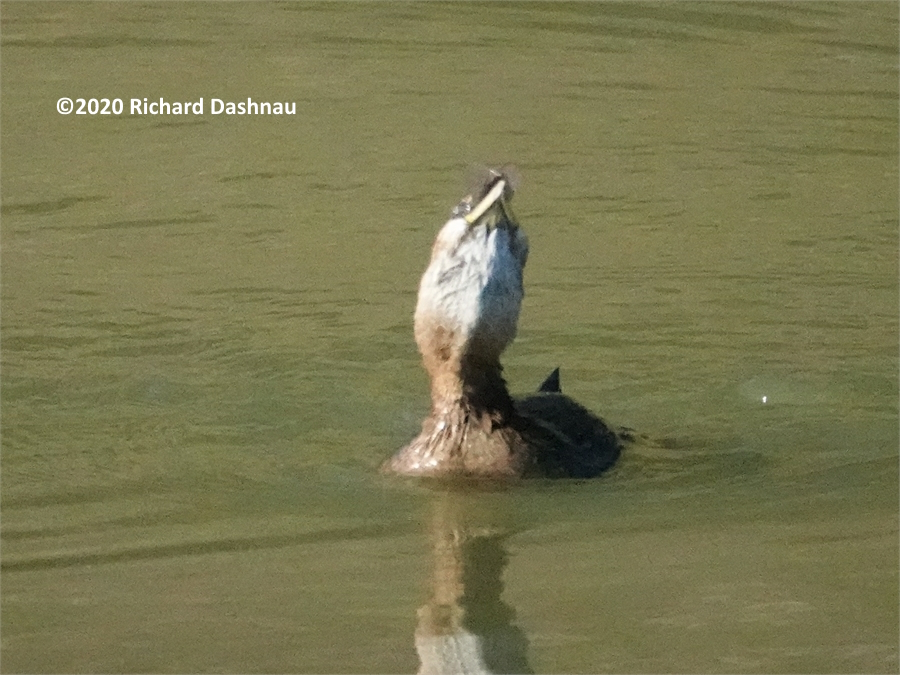
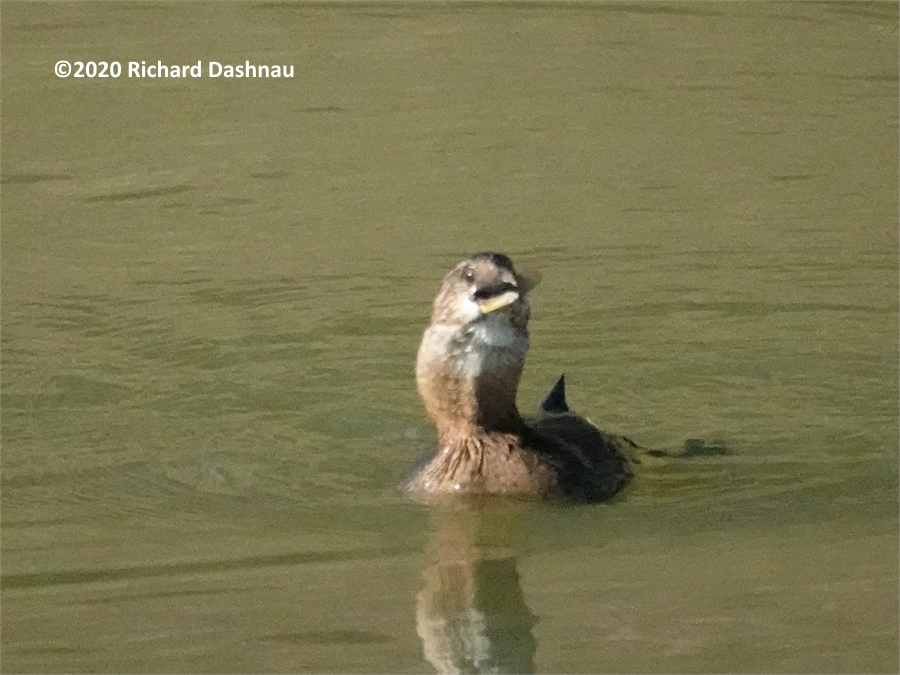
12/25/2019 I returned to Fiorenza Park and tried to
catch more video of the pied-billed grebes breaking off fish
spines. I did observe them catching armored catfish, and other
fish. They definitely use different feeding techniques,
depending on the type of fish they've caught. These images
show a couple different grebes that have caught fish which may
be blue tilapia (Oreochromis aureus)--at least going by the shape
and the long spiny dorsal fin.




The grebe in
the pictures below is a different one than in the pictures
above. And for a video demonstration of one of the grebes
swallowing a tilapia, click
this link.



And, just
because they look wonderful, the picture below shows a flock of
White Pelicans that flew over me.

12/07/2019-12/14/2019
I
was at Fiorenza Park last weeked. I noticed some Pied-Billed
Grebes hunting, along with the usual Cormorants. After a while,
I noticed that the grebes started catching fish.
One of them caught and swallowed a nice-sized fish (some kind of
crappie, or maybe a tilapia, I think). Then, I was
surprised to see them catching and eating armored catfish! I
caught some of
this on video. Some of the attached images are frame grabs from
the video, and some are just photos. While shaking and
"juggling" their armored catfish, it seemed that the grebes
were handling them by the fins, and violently shaking them by
twisting their heads. I've seen Yellow-crowned Night Herons use
this shame technique while breaking off the claws and
legs of crawfish. Perhaps the grebes were trying to break
off the sharp "barbs" on the fins of the fish before they ate
them. It appeared that the grebe would lift the fish by one of
the barbs,
then violently shake it. I couldn't see for sure if the barbs
were breaking off, though. Then, I returned to the park on
12/14. This time I caught some video that shows that the grebes are
breaking
the sharp spines off
of the catfish! I've added that clip to the
edited video. The 4 images on the bottom row below are
frame-grabs that show when the spike has been broken off. The
arrow in
the last image is pointing to the spike in the grebe's
beak. I've edited
the clips together into this
video showing the differing techniques.
The cormorants
used a different technique to subdue their
fish.
Their method employed the sharp hook at the tip of their
top beak (upper mandible). The Cormorants tossed their armored
fish
until it was upside-down. This exposed the fish's softer
underside to that hook. Then the cormorants forced the hook into
the fish (by violent shaking)--most likely doing major damage
and causing
the fish to weaken and relax its spines. This is all
guesswork driven by what I can see in the video clips.
I've edited them together into this
video showing the differing techniques.
About the armored catfish....
I've been calling these fish plecostomus for a long time. I was
aware that there were a few different species of these in local
bodies of water--but I had read somewhere that
calling them all "plecostomus" was acceptable. Just recently,
I've finally found some information that may help tell these
species apart. From the sources I can find, it
seem that the most common armored catfish are one of two
genus: The Hypostomus genus and Pterygoplichthys genus.;
with the two most likely species as Hypostomus plecostomus
and Pterygoplichthys anisitsi. (that's pronounced
ter-go-plik-thees according to this source listed ). The
clearest descriptions I've found online were in this document on
the Edwards Aquifer website:
https://www.edwardsaquifer.org/wp-content/uploads/2019/02/2005_Howells_SuckermouthCatfishes.pdf
or,
if that document gets moved, here is the page with the link:
https://www.edwardsaquifer.org/doc_publications/exotic-suckermouth-catfishes-family-loricariidae-in-texas-waters/
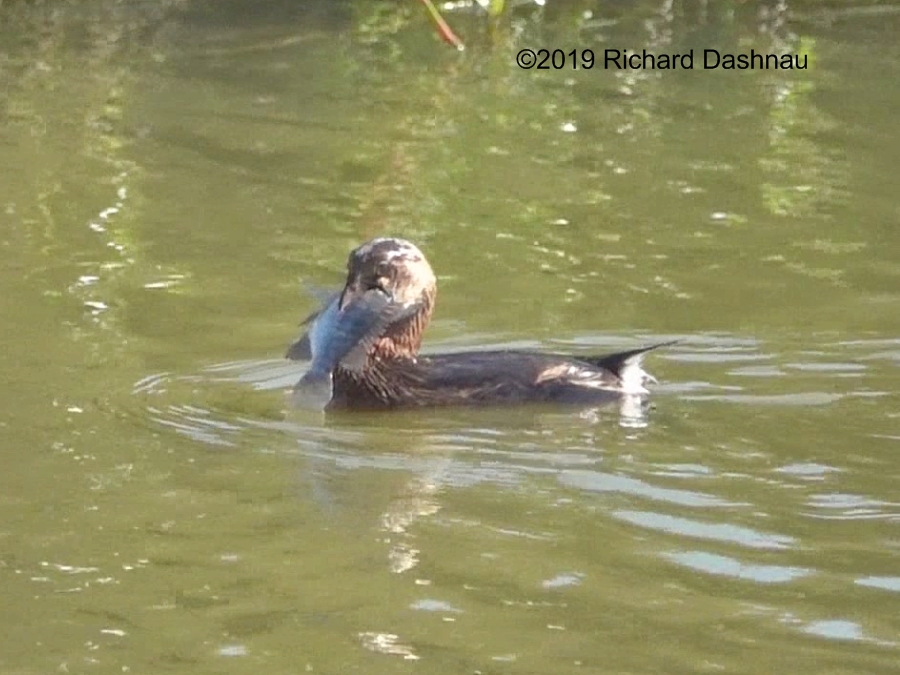
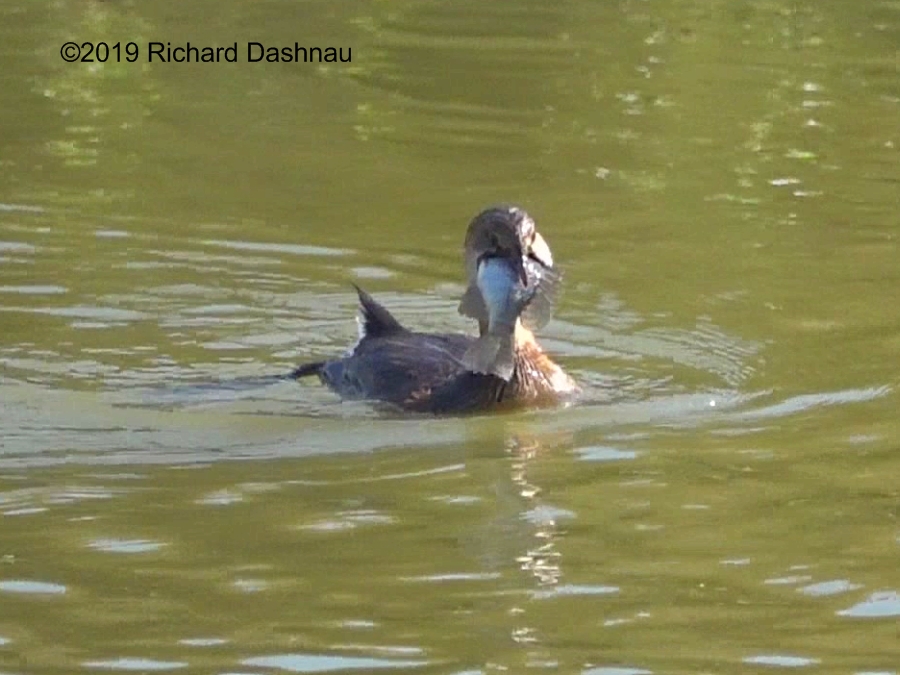
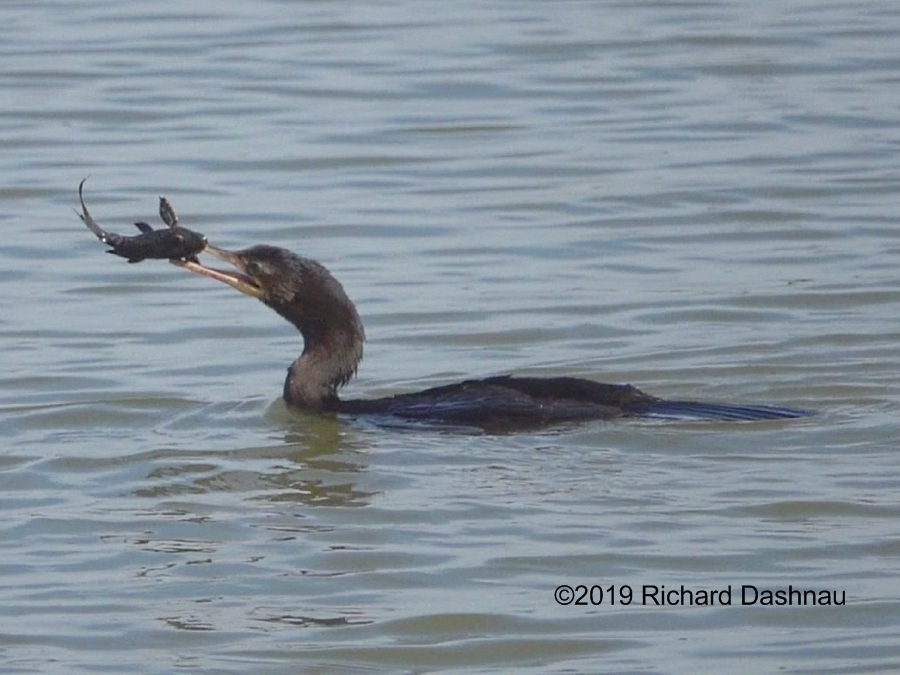
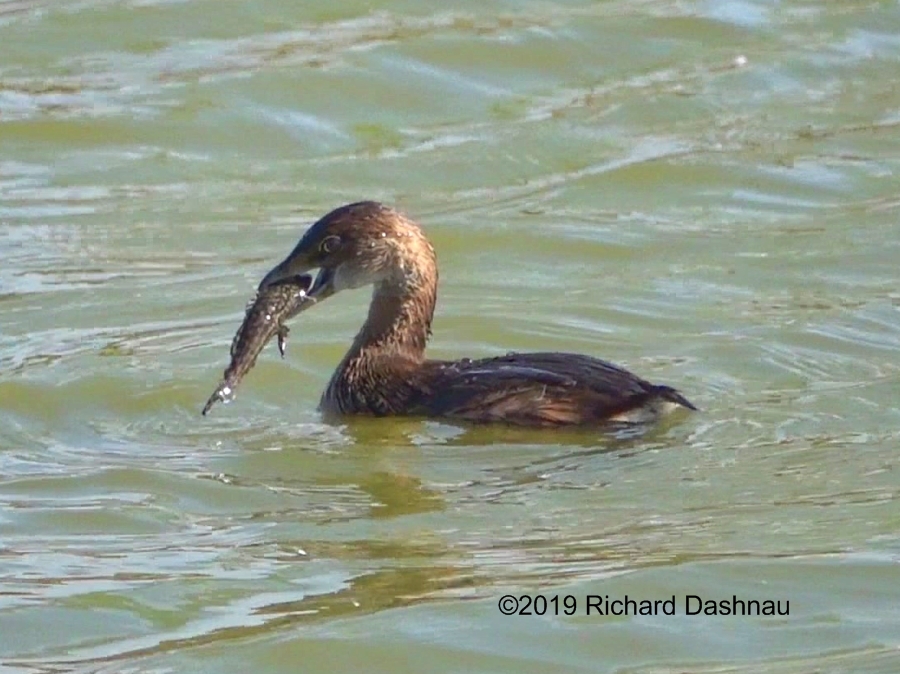
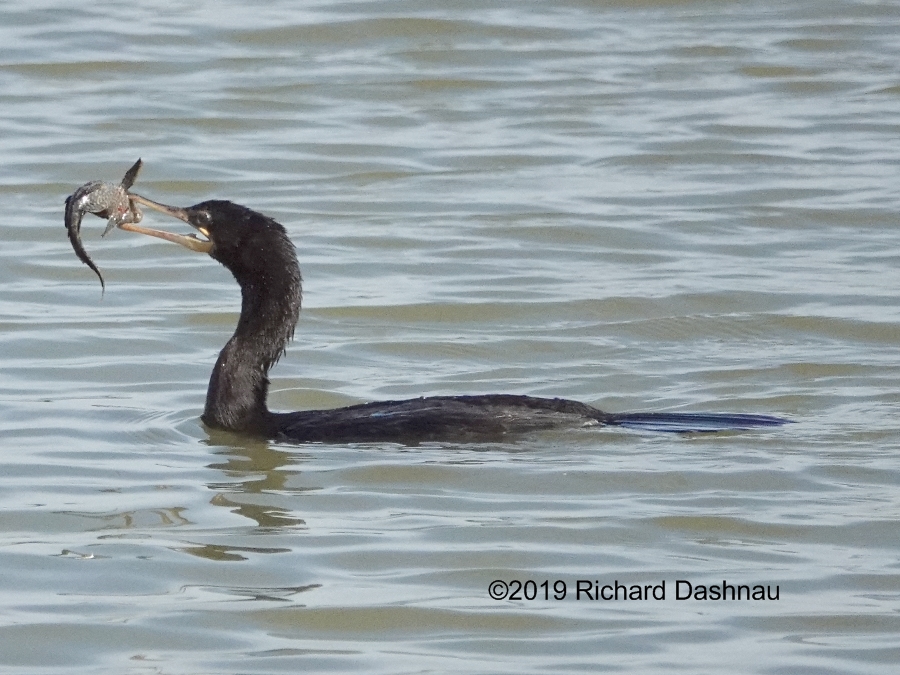
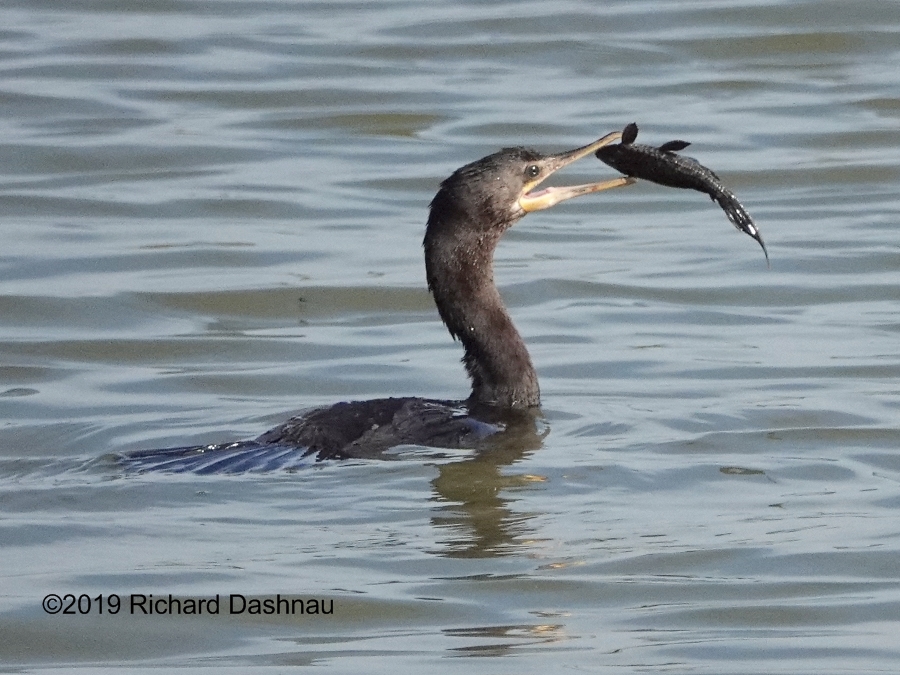
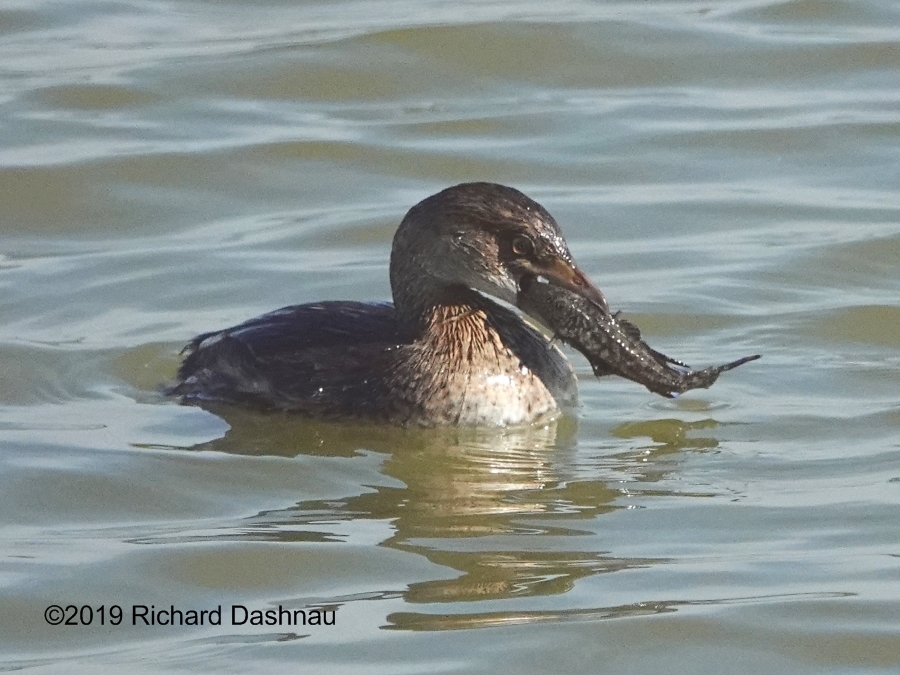
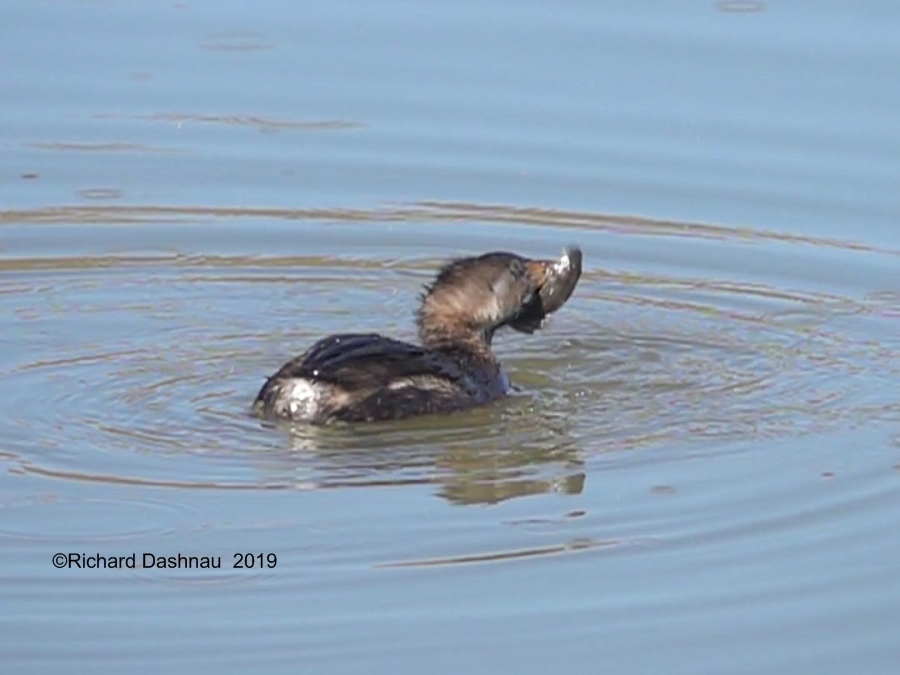



04/09/2018 and 05/27/2018 Alligators
move through a busy environment at Brazos Bend State Park.
Alligators are aware of many of the animals around them--and the
animals around
are also aware of the alligators. It may surprise some (it
surprised me
that some of these animals (such as some birds) may
actually make use of the presence of an alligator. I've watched
Grebes follow alligators many times. This Spring, I was able to
capture this on video. In one clip, there are two Pied-Billed
Grebes following an alligator. In the other, it is a Least Grebe
that follows an alligator. I suspect the the grebes are
following along to catch any prey that the alligator may flush
out as it moves. Both species of grebes are shown swimming after
with their face in the water--a behavior sometimes called
"peering" or "snorkelling". This allows them to see under the
water. In the clips, it's obvious that the grebes are actively
pursuing
the alligators.
The two images below are frame-grabs from the clips. The
edited video is here.


PIED-BILLED GREBE CHASING GATOR
LEAST
GREBE CHASING GATOR
Pied
Billed Grebes--04/09/2017 I'd
heard
(from various "birder" friends) and read (in various places) of how grebes can control
their bouyancy, and sink slowly, or even
swim partially submerged. However, I've rarely seen grebes do
it. Most of the time, I've seen them dive as in shown in other clips
and photos on this page. But, I've finally
caught some good "close" video of a grebe "sinking". The
images below are frame grabs from the video clip which I filmed at
480 frames per second--and then save at
30fps (16X slower). I've uploaded an edited version of the
video that can be seen here: Grebe
sinking. At the end of the edited video is very short version of
the same
clip played at "normal" speed. Below is the sequence of
frame-grabs showing a Pied Billed Grebe sinking.
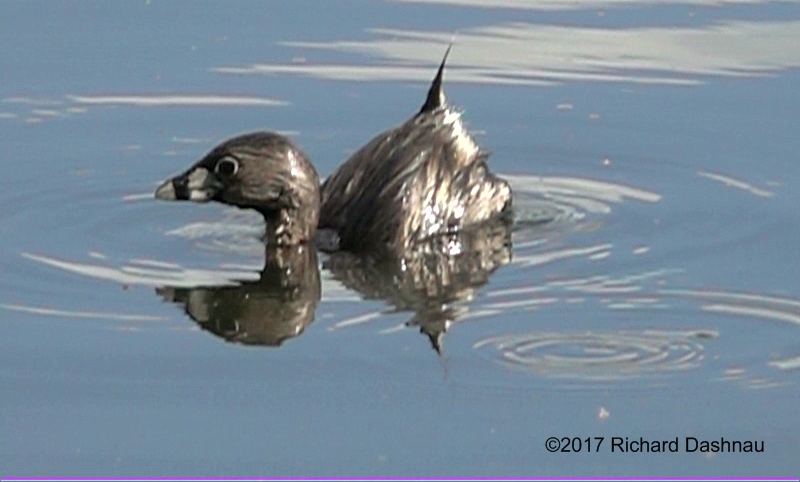 -
-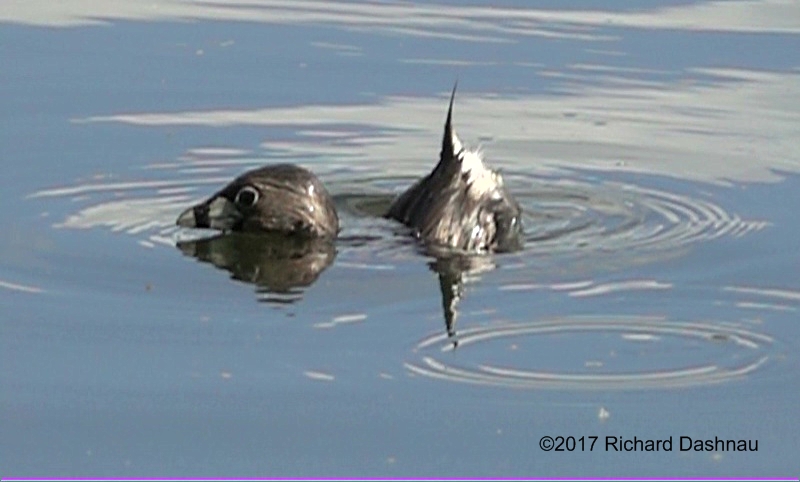 -
-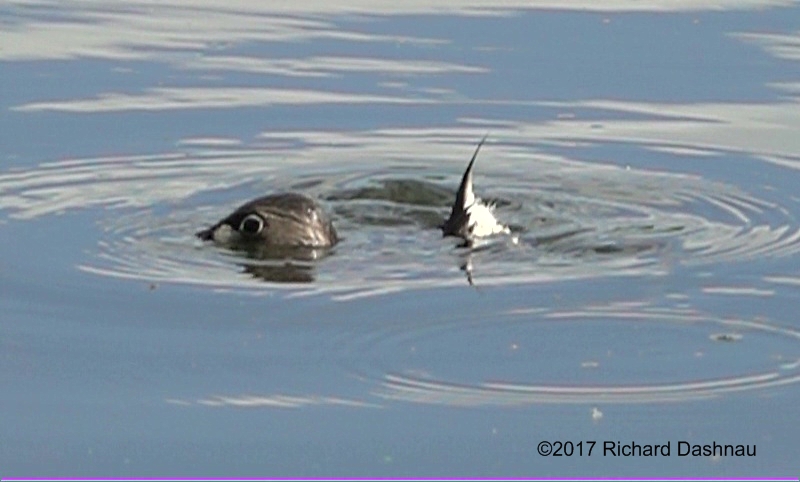
-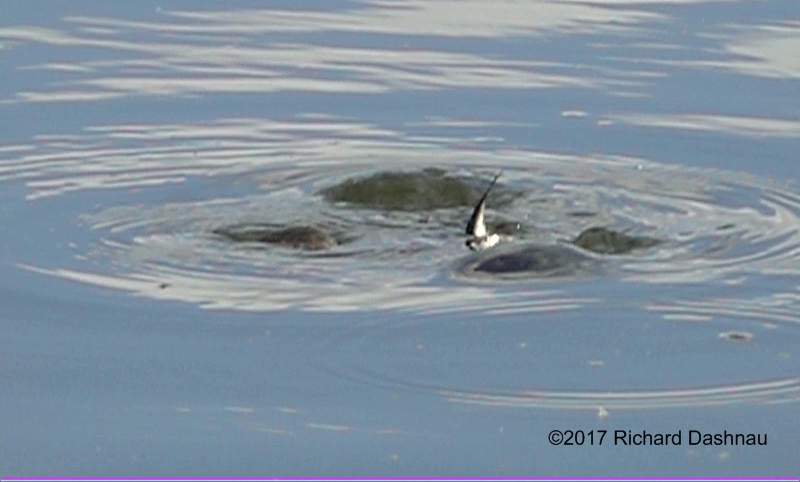 -
-
More
Least Grebes--12/20/2009
Today
was the first bright, sunny Sunday we've had in almost a month. I
didn't spend as much time out around the bigger lakes as I'd like,
but that's just
how it is sometimes. I decided to go to Creekfield Lake and see if
any otters would show up. No, they didn't, or at least I didn't see
any. But staying by the lake, and watching is just a lot of fun.
When I got onto the long pier, I came upon one of our park visitors
photographing the Least Grebes. They were very close to the pier,
and obviously didn't mind people near them. The water
was crystal clear. I moved closer to the Grebes, and started taking
pictures of them, and they submerged as usual. But today, they were
easily visible while under the clear water! A small
group of us watched as the Least Grebes paddled around, and when
they submerged--we could all easily see them poking around on the
bottom! It was *really* quite exciting. I shot for
slow-motion, hoping to slow my jerky camera movement as I tried
to track them underwater. I shot a few clips--some nice dives, and a
few surfacing Grebes. These events were very, very
nice when you can see the Grebe under the water. But, I got one
nice continuous clip of a Grebe diving, foraging, and surfacing all
in one go. At the adjusted slow-motion frame rate, the clip
is about 2 minutes long (but actually happened 7 times faster than
that). I've edited it a bit (I did some enhancement of the
underwater sequence to try to minimize surface glare). Here's the
first clip
(wmv 18.8 mb). Below is a sequence of frame-grabs from one of the
clips showing a Least Grebe diving.
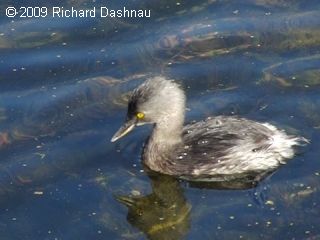 -
-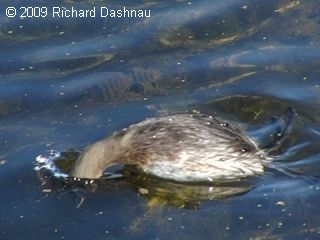 -
-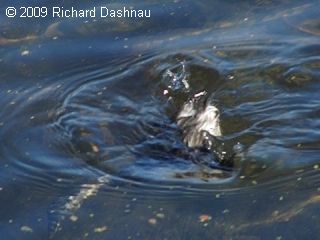
-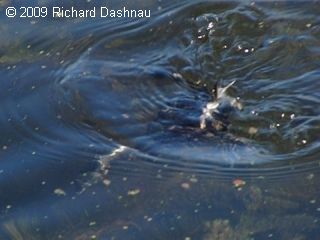 -
-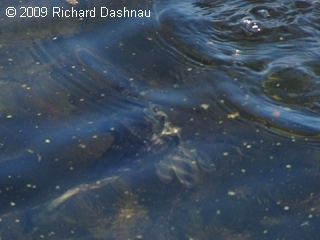
The 2nd clip is compiled of a number of short segments
of the three Least Grebes (someone told me one parent and two young)
diving and surfacing. I put these together, and am passing
them on because it's so much fun watching them. Click to see the 2nd
clip
(wmv 18.7 mb). I noticed that the Grebes seemed to keep
their butts turned towards us most of the time. Not
only that, but they appear to open the air-gaps between the feathers
so that it appears (to me, anyway) that bare skin is visible.
Today's RICKUBISCAM shows a Least Grebe in that
position. The sun is generally behind me when I'm watching the
Grebes. Is it possible that they are trying to catch some solar
heating on the bare skin back there? The under-feathers are
brightly-colored, and not dark (which would help absorb solar heat).
Right before a dive, I can see them fold the feathers back down,
forming a more streamlined profile, and also catching
air against the skin (more guessing about function). It doesn't make
sense to be ballast, but large air bubbles appear when the Grebes
dive. This is quite obvious in some of the video clips.
Below is a sequence of
frame-grabs form one of the clips showing a Least Grebe sufacing.
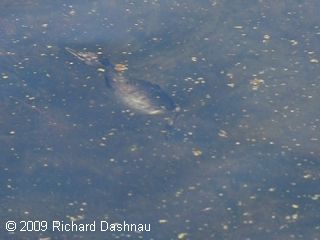 -
-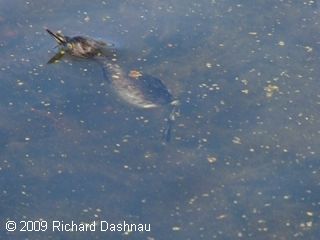 -
-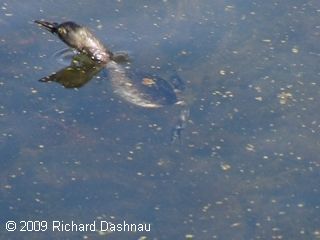
-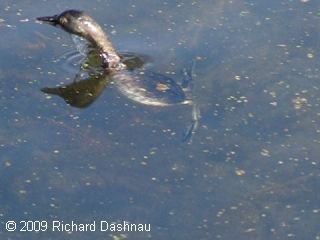 -
-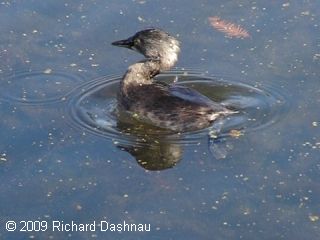
I'm also amazed at the contortions that the legs are
capable of while swimming. They're doing a lot more than just
"rowing" straight back or paddling while the Grebes are surfaced.
They
push up, out, twist, and even seem to brake the Grebe when it
surfaces. And those piercing yellow eyes are brilliant. The very
last segment in the second clip shows them off.
I was able
to find one of my answers about behavior online. It seems that my
guess was correct, and that Least Grebes are sunning
themselves when they bare their backsides.
At least (heh...
"least") it seems that they aren't mooning us. Here are
the two links for the clips again: first
clip
(wmv 18.8 mb) 2nd
clip
(wmv 18.7 mb).
Here's some links about
the sunning: All
about
birds. The following is in a book that
Google has listed. If the links don't work, look on page 62 of
this title:
Nesting birds of a tropical
frontier: the Lower Rio Grande Valley of Texas click
link
And here
is the RICKUBISCAM picture of the Grebe showing its butt: 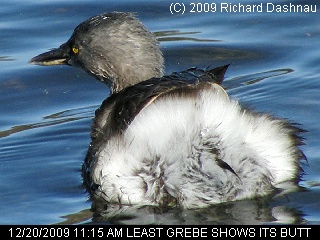
10/25/2009 Grebes are small swimming
birds. Their legs are set far towards the rear of their body,
which makes them good swimmer. However, they are rather clumsy on
land. But, they
can RUN ON WATER!! I shot a short video of one Pied-Bill
Grebe chasing another in Creekfield lake. The image below is
a frame-grab from this video clip.
10/25/2009
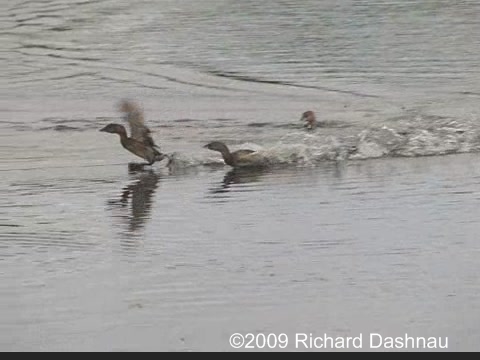
Least
Grebes--Summer-Fall 2009
Grebes are small swimming birds. Their legs are set far towards the
rear of their body, which makes them good swimmer. However, they are
rather
clumsy on land. At Brazos Bend State park, we usually see
Pied-Billed Grebes. A few years ago, at least one family of Least
Grebes has appeared at the park. Least Grebes have a very
limited range (according to Sibley's Field Guide to Birds, page 29).
The appearance of the Least Grebes at the park was big news. Even
more exciting was the fact that the Grebes have
apparently remained at the park, and produced chicks for at least 2
years. The Least Grebes are small with narrow, short pointed beaks,
and the adults are dark grey with bright yellow eyes.
The young are generally grey, but with pronounced black and grey
stripes. Through this summer, I was able to get some pictures and
video clips of these uncommon residents of the park.
Today's RICKUBISCAM is one of those pictures from July 2009. During
that session, the single Least Grebe was hunting near the Spillway
Trail. Passing juvenile Moorhens would
occasionally harass it, and try to take the food that it caught. The
last picture is a frame from the video clip. There are two sections
in the clip. First, the Grebe has an insect (probably a Water
Scorpion), and one of the Moorhens attempts to steal it. The other
section shows the Grebe snatching a dragonfly out of the air.
7/26/2009
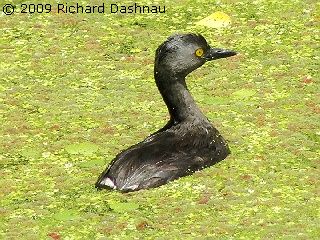
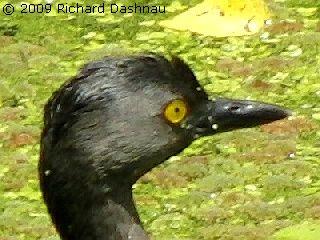 -
-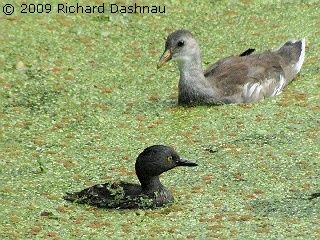 -
-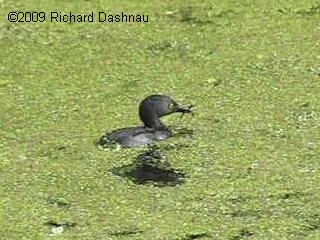
POKING IN THE
DUCKWEED
THE BRIGHT YELLOW EYE
YOUNG MOORHEN BEING A
NUISANCE HUNTING, 2
CLIPS, SLOW MOTION
- video
clip (wmv, 11.9mb)
Later, the Least Grebes appeared in Creekfield Lake.
The remaining material was all shot there. The three images from 9/20/09 show one of the adult Least
Grebes feeding the young ones.
Most of what they caught might be Water Tigers--the larva of the
Predacious Diving Beetle. The third image is a frame from the video
clip. This clip was shot at normal speed, and shows the
Least Grebes and their young. The high peeping sounds are from the
chicks. The fourth image is from another video clip from 10/11/09.
This one was shot at 210 fps, so it shows a parent
feeding babies in slow motion. 9/20/2009
10/11/2009
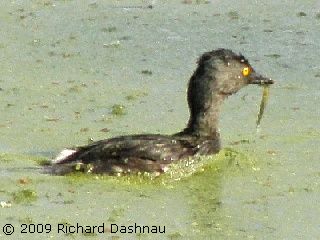
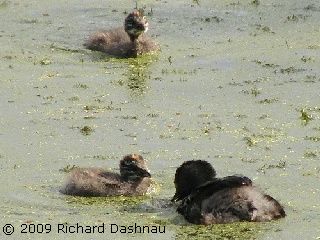 -
-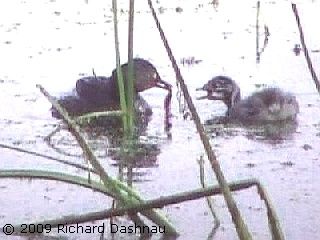 -
-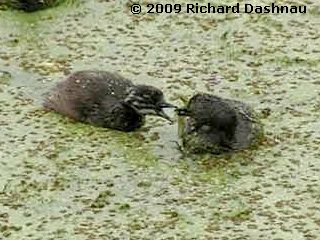
-
WITH
A WATER TIGER
ADULT
WITH CHICKS
FEEDING THE YOUNG
VIDEO CLIP
THE HEAD FROM THE SIDE
video
clip
(wmv, 14mb)
video
clip (wmv, 8.4mb)
The last four images are from 11/01/09. The Least
Grebes were finally in some sun. The second and fourth images are
just cropped closeups of the first and third images. Look at
how
brilliant the eyes are!
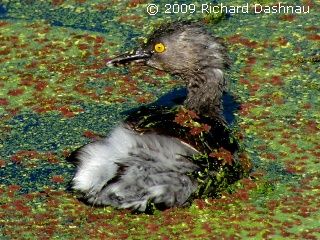
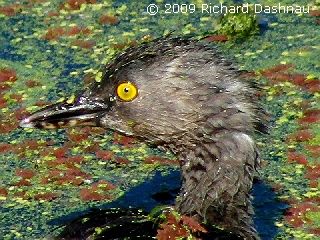 -
-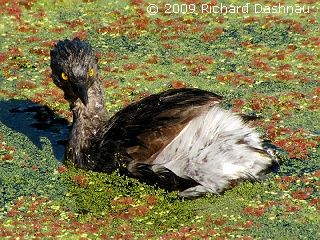 -
-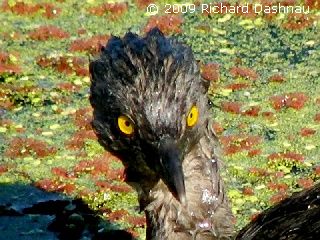
GREBE IN
DUCKWEED AND AZOLA
THE HEAD
CLOSEUP
GIVING
ME THE STARE
BOTH EYES CLOSER
Go back to my home page, Welcome
to rickubis.com
Go back to
the RICKUBISCAM
page.
Go back to
the See the
World page.




















































 -
- -
-
 -
-  -
- -
-
 -
-
 -
- -
-
 -
-



 -
- -
-
 -
- -
-

 -
- -
-